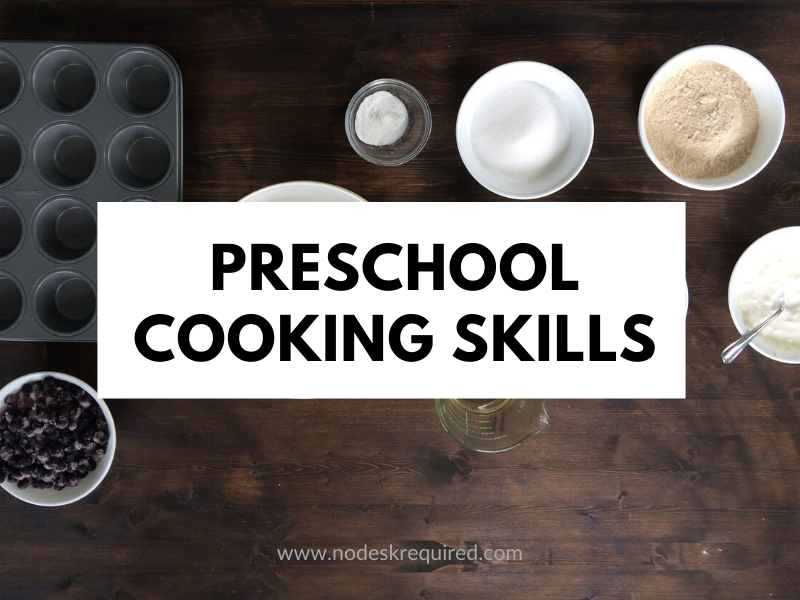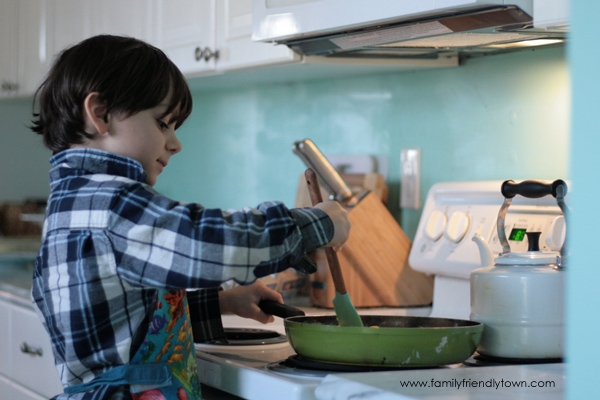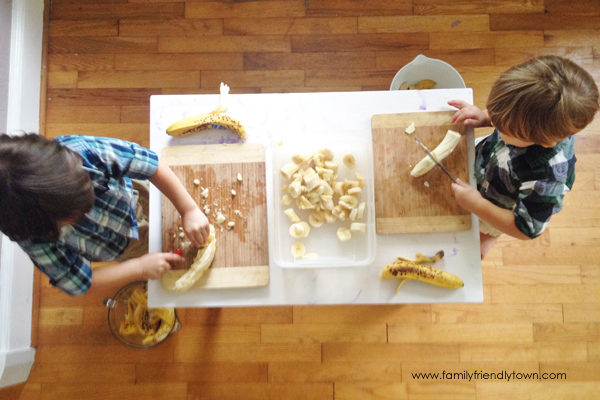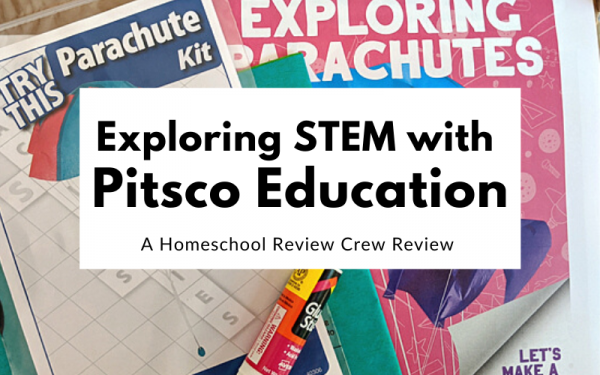Preschool Cooking Skills

If your kids are anything like mine, they love to help in the kitchen. Stirring is an easy task, and one of the first things we usually allow our little ones to tackle as they offer to “help” but, by the time they’re preschool age, there are parts of the cooking process that they can truly accomplish on their own if we let them, and the benefits include more than the finished food: Fine motor skills practice, increased independence, science discussions, and many others.
These are just a few of the ways preschoolers can help in the kitchen. If you need some guidance in knowing what they might be able to handle, choose a bullet point to start with and go from there. These aren’t in any particular order and only you and your children know what they’re capable of, but these are tasks that most 3-5-year-olds can handle in some capacity. Just make sure they can reach their workspace easily. If you don’t have a sturdy stool at the counter (or not enough stools to go around) letting them work at a low table is also a great option.
- Prep – Preschoolers can line muffin tins, grease baking dishes, help gather ingredients, load the blender, and more. This is an especially great place to start if cooking with kids isn’t your strong suit and you need an easy warm-up.
- Crack – There’s something about cracking eggs that kids just love. To make scooping out shell pieces a little easier, have your little ones crack eggs one at a time into a bowl separate from any other ingredients.
- Knead – Preschoolers usually enjoy the process of kneading dough.
- Chop – Mastering knife skills at a young age can help minimize kitchen injuries later on in life, but a manual food processor, egg slicer, and food chopper are also great cutting instruments. Soft foods such as bananas and hardboiled eggs are good beginning ingredients for kids with little experience slicing and dicing.

- Measure – Young children can work on their math skills, including a gentle introduction to fractions, while counting and measuring ingredients. Using a color-coded measuring set can help them identify the correct cups and spoons while cooking.
- Peel – Little hands can peel onions, clementines, and eggs, and husk corn. This is also a great time to introduce them to using a vegetable peeler. I’ve found carrots to be one of the best foods to start with, since they’re easy for small hands to grasp.
- Spread – Peanut butter on bread, batter in a pan . . . spreading is fun no matter what it is!
- Blend – If your preschool doesn’t mind the noise, using a traditional or immersion blender can be exciting. And using a simple recipe (think smoothies and whipped cream) offers them an easy way to make something on their own from start to finish.
At the stove – if you feel your child is ready to work at the stove with supervision, some of the easiest things to start with are scrambled eggs, pasta, rice, and pancakes.
———-
Do you have favorite cooking activities for preschoolers and toddlers?
I’d love to hear how your family handles kids in the kitchen!




2 thoughts on “Preschool Cooking Skills”